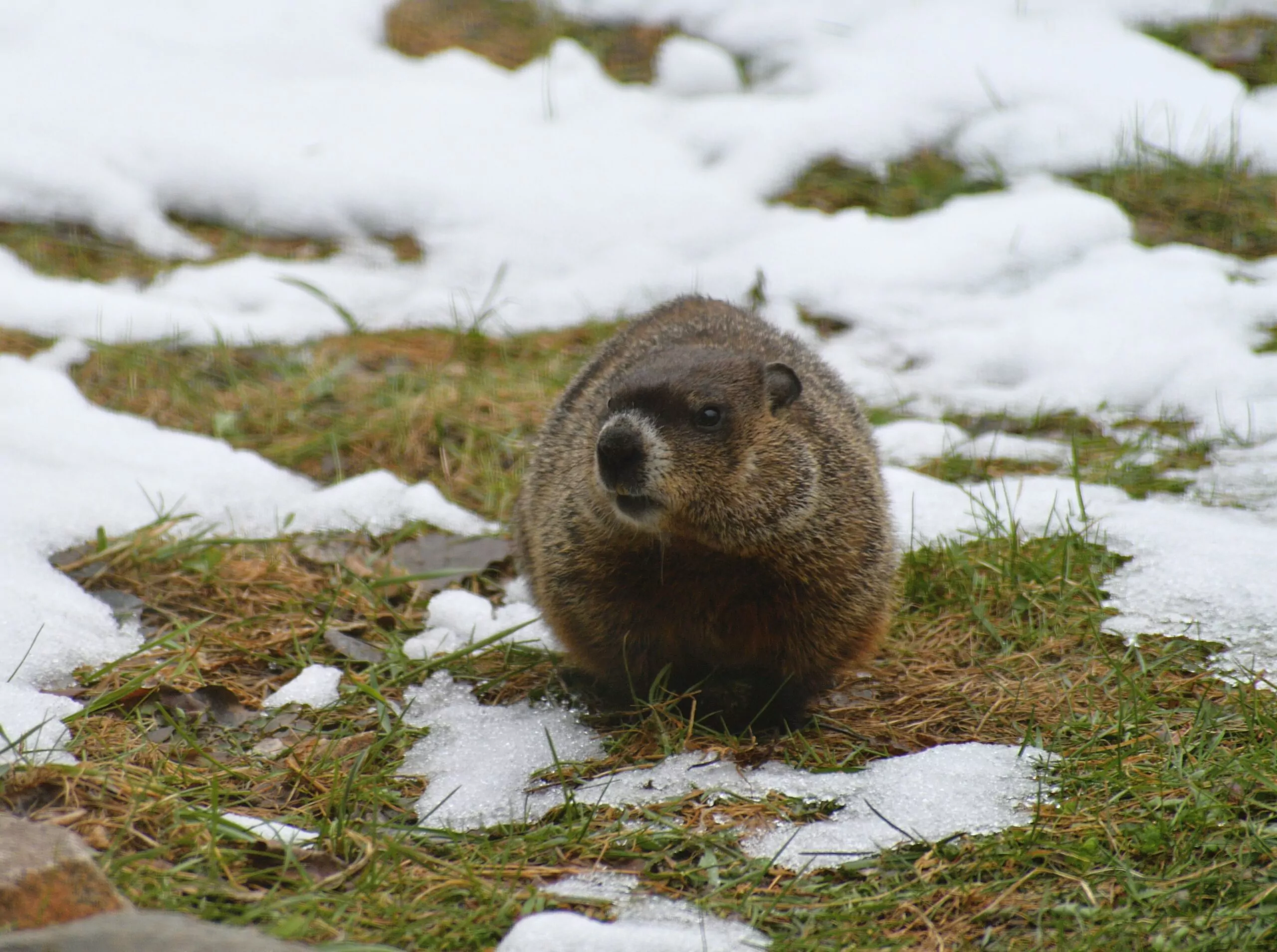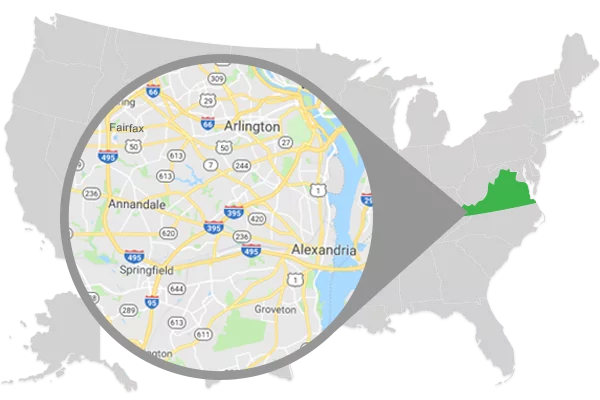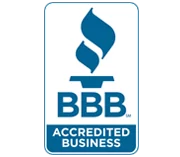
Groundhog removal in Arlington, Fairfax, Alexandria and other Northern Virginia regions is crucial for your safety and for the safety of others in your home. Groundhogs although not known for being usually being aggressive, can cause damage to your property and can even pass infectious diseases on to you.
What do groundhogs look like?
Groundhogs are medium-sized rodents also sometimes called woodchucks. Some people are familiar with them because of the holiday called Groundhog’s Day. On that day, if the groundhog sees his shadow there will be six more weeks of winter and if he doesn’t, spring will come early. While there is no science behind it, it is a fun tradition that continues to be a celebrated holiday. They are members of the squirrel family, more specifically the ground squirrel family and can weigh up to 13 pounds and be as long as 22 inches. They are compact and chunky with grayish brown fur, four legs and long, curved claws on their front feet for digging and burrowing. Groundhogs are active during the day and will even sunbathe when it is warm out. They do all their feeding during the daylight hours and will sleep in the evenings.
Groundhogs are herbivores, meaning they are strictly vegetarian. Their diets are made up of soybeans, beans, peas, carrot tops and alfalfa grasses. A favorite treat of groundhogs is cantaloupe and can be used when trying to trap the animal. Groundhogs can be found near forests and bushy areas, they make their homes along creeks, pastures and wooded areas where they can make their burrows. In the late fall, groundhogs will begin to hibernate and will do so until closer to the end of February.
Signs you have a groundhog on your property
Groundhogs tend to try to gain entry to places that offer warmth, shelter or a place to breed. Most often, shelter will be sought out for breeding so that pregnant females will be able to find a safe place to have her young. Most often, groundhogs will choose a location at the ground level. The most significant sign that you have a groundhog is through the urine or feces or seeing the holes or burrows that they make to live in.
What damage can groundhogs cause?
Groundhogs are considered a nuisance pest because they will burrow and dig holes on your property. They will damage farms, gardens, orchards and fields of crops. They might cause problems with HVAC systems or dig under porches, decks, garages and foundations and crawl spaces and disrupt the functionality of things in the home and on the property. Additionally they can cause electrical outages if they chew wires underground. They are typically not violent unless they are sick or injured. Rabid groundhogs have been known to attack people. They are known to be carriers of rabies, fleas and ticks. Groundhogs can also contract a virus called Powassan, which comes from ticks and affects the brain causing encephalitis, in which the brain swells. In addition to those diseases, groundhogs can cause hepatitis, which is a disease that carries no symptoms and is only traceable through a lab test. Disease is not the primary concern for groundhogs. Most often they will cause damage more than they will hurt or get people sick.
Why should groundhogs be removed from your property?
While coexisting with animals is important, sometimes it can be impossible and even dangerous. When a groundhog is causing damage to your property or causing a health risk to you and your family, it is crucial to remove the groundhog from your property. Groundhogs are not protected in the state of Virginia, but it is best advised to remove them with care. There are certain laws pertaining to the methods of removal of groundhogs and other wild animals in Virginia, so the best thing to do to avoid doing something illegal is to read up on the laws and handle the situation in the way in which the laws advise.
Ways to humanely remove a groundhog
Although there are other methods for removal, the best way to remove a groundhog is to hire a wildlife removal professional who is skilled and trained in the methods of trapping. Groundhogs are receptive to live trapping. A humane live trap is set using bait that groundhogs enjoy, like apples, carrots and sweet corn. It is important to check the traps in the mornings. At Summit, we trap for five consecutive days where the traps are checked every day, re-baited and animals are removed from the traps. When a groundhog is in the trap, it is important to not try to touch them or harass them, because they are wild animals and may hurt you if they feel threatened or pass along diseases to you. Checking the trap is essential because groundhogs can get scared when they are in the trap and they can injure themselves in an attempt to escape. The technician who set and baited the trap will also remove the groundhog from your property. Following the removal, if there are any repairs needed, someone can take care of those. Trapping is not the only method of removal for groundhogs, but it seems to be the most successful way for removal in the Northern Virginia area.
How to keep groundhogs away from my property?
After you have groundhogs removed from your property, it is important to make sure the animal stays away from your property. One of the best ways to ensure groundhogs stay away from your property is with a deterrent or a barrier. Installing a wildlife barrier will work to keep animals out that don’t belong on your property. Another way to keep groundhogs away is to avoid planting crops in your garden that they like to eat. Some other things to use in your yard to deter groundhogs are human hair clippings, use kitty litter, Epsom salt, castor oil, garlic or lavender. Groundhogs do not like the texture and scent of these items and will stay away from your property if these are present.
If you need groundhog trapping or groundhog removal in Arlington, Alexandria, Fairfax or other parts of Northern Virginia, contact us today. Summit Wildlife Removal can schedule you for a fast, friendly and FREE estimate.











